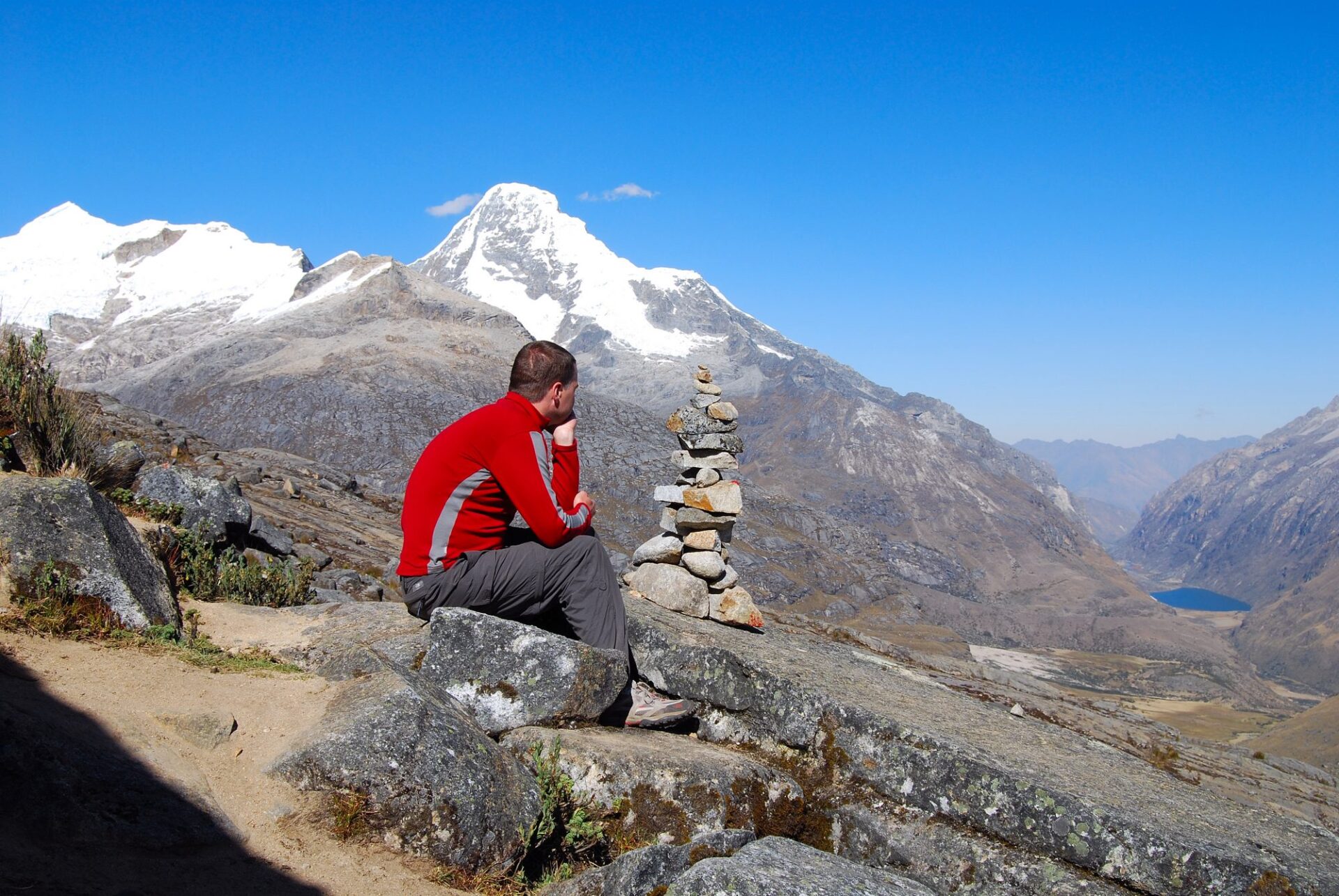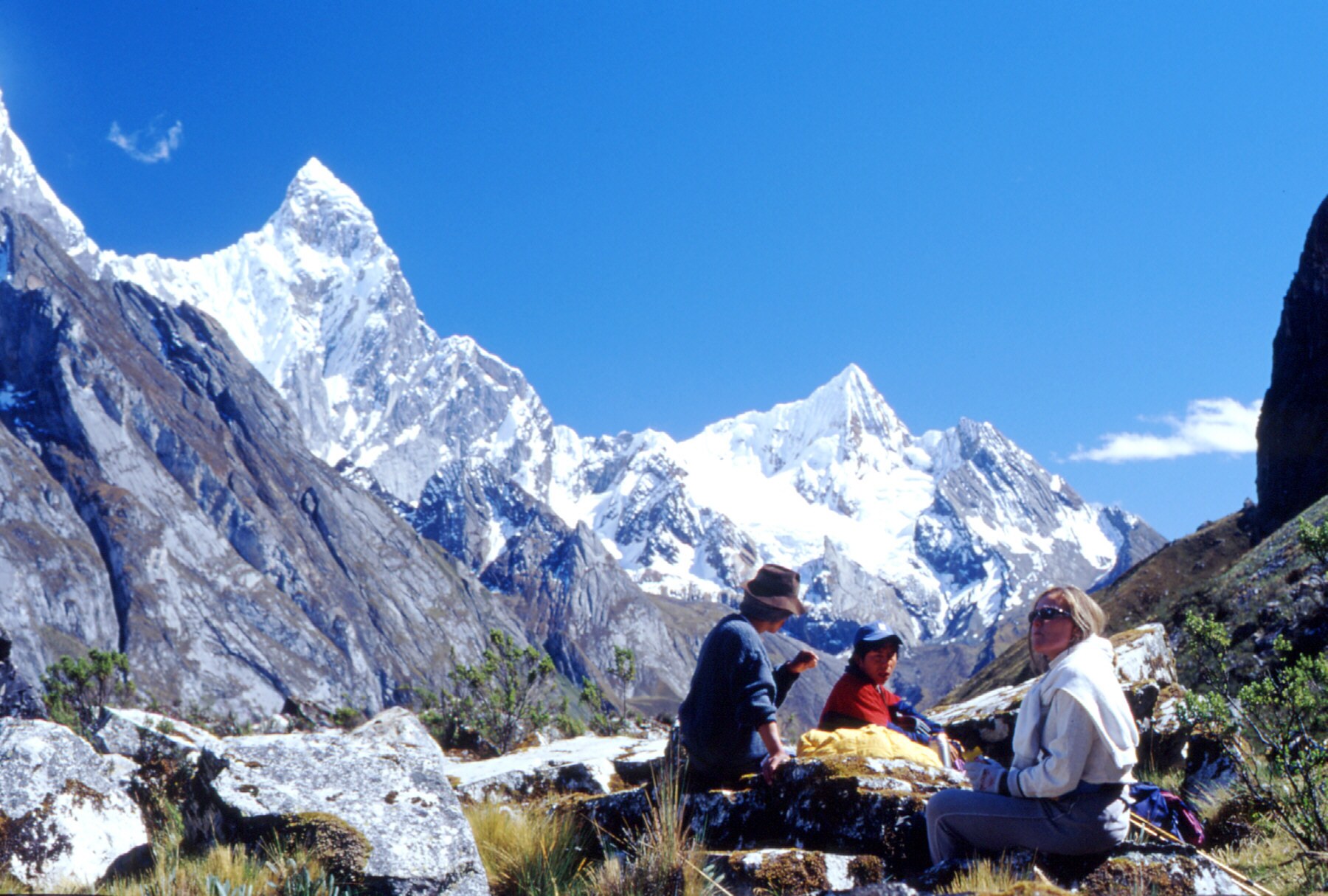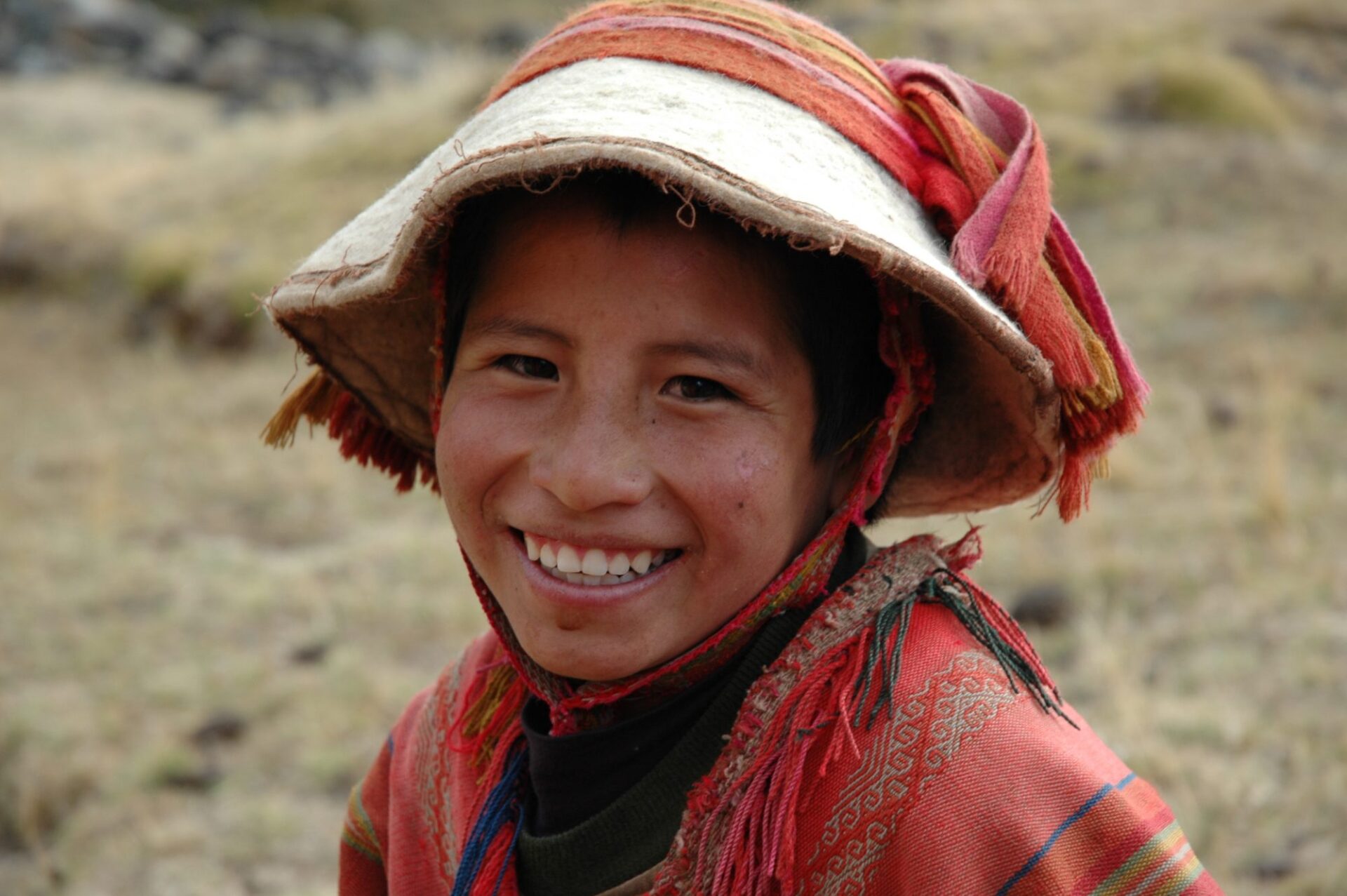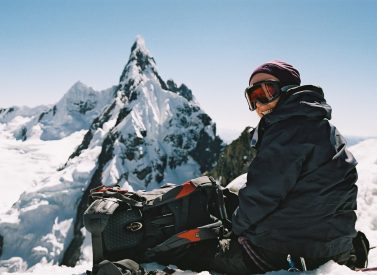
Ausangate & Salkantay Trek
Two of Cusco’s best walking adventures in one trip – the Ausangate trek followed by the Salkantay and Inca Trail trek.
Both hikes are around 80 km in length and offer two contrasting views of Cusco’s Cordilleras.
We start hiking in Cordillera Vilcanota around the remote Mount Ausangate, walking above the tree line and reaching passes of 5,000m/16,404ft.
Next it’s the Vilcabamba range where we leave the usual Salkantay trail and head over a remote to join the famous Inca Trail to Machu Picchu. This is the best known of all Peru’s treks.
More on the Ausangate trek
The focus of the first trek is Mount Ausangate (6,384m/20,827ft).
Conditions are tough but the scenery superb; emerald green lakes, glaciers, ice caves and hot springs abound.
Its remoteness has helped to preserve pre-colonial customs of the native Quechua Indians who live here, many of whom wear traditional dress and farm.
More on the Salkantay trek
The second trek crosses the Vilcabamba range past Mount Salkantay (6,271m/20,574ft), the range’s highest and most revered peak.
We head up and over a 4,700m/15,420ft pass and then descend to join the Inca Trail.
For three days we follow this masterpiece of engineering, passing remote Inca sites as we traverse four contrasting vegetation zones, then explore the lost city of Machu Picchu.
Trip Highlights
Print Share Download as PDF-
Two spectacular treks - both around 80km in length - around Cusco's finest mountain ranges.
-
Superb scenery in remote Andean areas.
-
Trek through the remote Cordillera Vilcanota area around Ausangate.
-
Walk Vilcabamba range past Mount Salkantay then join the famous Inca Trail to Machu Picchu.
The trip was fantastic. I think the trip was a life changing experience for some and everyone had nothing but positive things to say about it. It was more challenging than just doing the Inca Trail and that is what I wanted.
Thank you very much for organizing it and putting up with a lot of emails from the team/myself.
L. Power, Salkantay and Inca Trail
Full Itinerary
Day 1: Arrive Lima, transfer in to hotel (B)
Join the tour in Lima.
Day 2: Transfer to airport, fly Cusco, transfer to hotel (B)
We take an early flight from the Pacific coast to Cusco, nestled at 3,400m/11,115ft in the Huatanay valley, and have all of today and two further days to absorb its unique atmosphere while adapting to the altitude.
Day 3: Free day in Cusco, hotel (B)
According to legend, Cusco was founded by Manco Capac, having been sent to earth by his father, Inti (the Sun God) to civilize humanity. The absence of a written language makes it difficult to separate myth from history, but it seems likely that Manco arrived from the south of Peru about 800 years ago and founded what would become the capital of the Inca Empire.
It was only with the accession of Pachacutec several centuries later, however, that major expansion began. Under his successors, Tupac Yupanqui and Huayna Capac, the Empire reached its zenith, stretching from Colombia in the north to central Chile in the south.
Consequently, Cusco became a very important city; appropriately, in the native Quechua tongue, Cusco means ‘navel’ or focal point. But, in 1532, a band of bearded desperados appeared on the scene and within a year the largest empire in the Western Hemisphere had fallen into their hands. These were the Spanish Conquistadors led by Francisco Pizarro, and under their auspices Cusco was steadily transformed.
Today, the fascinating blend of finely engineered sloping Inca walls and Spanish colonial architecture give Cusco its special character; it’s a great city to lose yourself in.
Outside the red-tiled city, beyond the labyrinthine whitewashed streets are some outstanding examples of sacred Inca architecture; most notably, perhaps, the monumental temple-fortress of Sacsayhuaman, (easily accessible on foot), made up of precisely interlocking stones, many weighing upward of 200 tons. Further afield, the stunning Sacred Valley can easily be reached on public transport.
Well worth visiting are Pisac, with its twice-weekly craft and produce market and nearby mountain top citadel, and the fascinating Indian town of Chincheros.
At night Cusco offers perhaps the best selection of live Andean folk music to be found anywhere.
Days 4 to 10: 7-day Ausangate trek, final day return to Cusco, camping and one night hotel (6 x B,L,D)
This fully supported trek of approximately 80km, takes us right around the massif of Ausangate at altitudes of between 3,800-5,100m/12,467-16,732ft.
We see large herds of domesticated camelids (llamas and alpacas) tended by the local Quechua-speaking Indians; for centuries they have relied on the camelids for wool, protein, transport and fuel.
As we traverse the wilderness, we may well spot some wild Andean fauna too: viscacha (large rodent), fox, deer, vicuña (elusive wild camelid) and the Andean condor, largest land bird in the world.
From Cusco we have a beautiful drive of several hours to reach the starting point of our trek, the small highland village of Tinqui. We camp the first night near the village, and then head south towards the imposing form of Mount Ausangate (6,372m/20,905ft).
The next week will be spent marvelling at the stunning scenery as we circumnavigate the massif anti-clockwise; crossing grassy meadows, passing cascading waterfalls and blue glacial lakes, and negotiating some demanding high pases.
Our second night will be spent camping near the settlement of Upis. Beyond here there is little human habitation, and on the morning of the third day we ascend to the first high pass, (4,700m/15,420ft) on the flanks of Ausangate, affording awe-inspiring vistas of its glaciated mass.
A major provider of snowmelt waters to lake Sabinacocha, and thence to the Sacred Valley, this giant snow peak has for millenia been a highly revered Apu (mountain god). Indeed, during Inca times, the Emperor would bestow huge offerings of gold upon it in order to secure its favours. Today it is the focal point of Qoyllor Riti, the region’s foremost Indian festival.
The Palomani (5,100m/16,732ft) and Campa (5,000m/16,404ft) passes take us level with glaciers; from the latter pass we can explore nearby ice caves. As we descend from the heights, we approach the tiny settlements of Pacchanta and Yanama.
Weary limbs can be soaked in thermal springs before our final night of camping, and our return the following day to Cusco.
Day 11: Rest day in Cusco, hotel (B)
Relax in Cusco!
Days 12 to 18: 7 day Salkantay trek, final day return by train to Cusco, camping and one night hotel (6 x B,L,D)
This fully-supported trek covers a distance of approximately 80km. It is a beautiful walk, with the awesome backdrop of Salkantay, the range’s highest mountain, for the first two days. Along the breathtaking route we experience an impressive sweep of altitudes, from the ice-capped summit of Salkantay down through puna grassland and cloud forest to sub-tropical jungle at 2,000m/6,562ft above sea level.
On the first day we leave Cusco early and drive to the sub-tropical town of Mollepata (2,800m/9,186ft), situated in a citrus growing area. It is common to hear flocks of screeching parakeets as we trek northwards.
Today’s destination is the five family hamlet of Soray at 3,500m/11,483ft, a distance of approximately 16km. We camp in the valley at the foot of the towering peaks of Humantay (5,917m/19,413ft) and Salkantay (6,271m/20,574ft).
On the second day we climb steadily towards Salkantay and our target, the pass of Incachillasca, at 4,700m/15,420ft the highest point on our trek.
This is a tough but spectacular day’s walking. Descending from the desolate screes we camp on the high puna grasslands at Pampa Cahuana at 3,800m/12,467ft, after some 14km of walking.
On the third day we trek down the broad Cusichaca Valley, backed by imposing snow peaks. We pass the Inca site of Paucarcancha, remote farming settlements and stone corrals as we descend to join the famous Inca Trail to Machu Picchu at the village of Huayllabamba – 3,000m/9,483ft, and some 12km walking. Although it formed only a small part of the extensive network of Inca highways criss-crossing the vast empire, this ‘Royal Road’ to Machu Picchu clearly had important ritual functions and probably served as a sacred pilgrimage route related to the veneration of natural and celestial phenomena.
Many well preserved archaeological sites of fine engineering and construction along the trail suggests that access was limited to an elite. The absence of both The Trail, and Machu Picchu from the early Spanish chronicles demonstrates that their existence was not known during colonial times, and explains why the Inca structures escaped the systematic destruction at the hands of the Spanish conquerors.
The Trail is a paradise for botanists and birdwatchers due to the rapid succession of ecological and climatic zones which are crossed. Hummingbirds can be found all along the trail, and typical at high altitude are birds of prey such as puna hawks, harriers, buzzard eagles and sometimes Andean condors. It is also possible to see some of the 60 species of orchid which have been identified and classified in this area.
The second stage of our trek begins on the fourth day with a long climb to the pass of Huarwimanusca, also known as Dead Woman’s Pass at 4,200m/13,780ft.
From here, we descend to our camp in the Pacasmayo Valley at 3,600m/11,811ft, after 14km of walking, or near the ruins of Runkurakay.
The fifth day begins with an ascent to the third pass at 4,000m/13,123ft, from where we descend a paved Inca path to the dramatic ruins of Sayajmarca, and continue on through the lush cloud forest to our next camp at Phuyupatamarca at 4,200m/13,780ft, some 14km of walking. The view into the deep, forested Urubamba Gorge is awesome.
On the sixth day after a dramatic descent of approximately 1,500m on Inca stairways, we arrive at the Inti Punku (Sun Gate), from where we catch sight of Machu Picchu spread out below. We drop down to the site mid-afternoon, before descending a further 400m to the small railtrack town of Aguas Calientes, where we spend the night at an oxygen-rich 2,000m/6,562ft – some 12km of walking.
Tonight we can take a well earned soak in the hot springs (optional). In the morning you can visit the site again before our return by train to Cusco.
Day 19: Free day Cusco, hotel (B)
Free day for some final exploring or some well-deserved rest and relaxation.
Day 20: Transfer to airport, fly to Lima, tour ends (B)
We take an early flight down to Lima, the City of Kings.
Tour ends Lima.
Prices From $3,220 / £2,618 per person
What's Included?
All meals and water on trek, all breakfasts elsewhere, domestic transportation, guide, hotels 7 nights, camping 12 nights, communal camping equipment (tents, cutlery, dining tent etc).
What's Not Included?
International flights (we can look for prices for you), other meals, snacks and drinks, any equipment hire, personal expenses, optional excursions (i.e. rafting), extra entrance fees, tips, alcoholic or soft drinks, laundry and sleeping bag.
Accommodation
Hotels in Lima and Cusco will be in 2-3* hotels, central, clean with private bathrooms. Upgrades available at extra cost.
Camping with dining tent and toilet tent, plus one night hostel (2*) in Aguas Calientes.
Tour Staff
All guides are certified, bilingual, English-speaking guides who have worked with us for many years.
Cooks, mule drivers and additional staff are all from the local, nearby communities and we have worked with them for a long time.
Meals
Vegetarians and many other dietary requirements are catered for without problems. Please let us know in advance of any requirements you have.
You wake early, usually around 07.00. Breakfast is served in a dining tent, and consists of hot drinks, porridge, toast, jams and bread, and your guide will explain the day’s trekking plans.
Lunch is usually around 13.00 and can feature soups, meats, salads and fish, with vegetarian options and hot drinks too.
The campsites are comfortable and around 17.00 hot drinks, popcorn and other snacks are served to help you recover energy.
Dinner is served around 19.30, and will feature pasta, mashed potatoes, meat, fish or vegetarian options, followed by hot drinks and a pudding.
Activity Level
We have classified this as a challenging trek, and you need to be in very good physical shape for it.
You have two, week-long hikes to complete – you will walk 5-8 hours a day for 6 consecutive days for both, over rugged mountain trails at high elevations
There are several high altitude passes to cross at 5,000m/16,404ft in Ausangate. In Salkantay, there is a 4,700m/15,420ft pass to tackle before dropping into lower elevations en route to Machu Picchu.
Pre-trip preparation should include challenging cardiovascular exercise (including regular hikes on varied terrain) and a healthy, balanced diet.
Well-worn hiking boots and additional acclimatisation nights in Cusco (3-4) before the trek are both highly recommended.
All guests are encouraged to hike at their own pace, taking breaks whenever needed, to ensure a successful and enjoyable trek for all.
Most people go to bed fairly early after a long day trekking, to recover energy for the morning.
Practical Information
Introduction to Peru
Peru is the perfect holiday destination for adventure travellers that want an amazing variety of activity, geography and cultural travel experiences.
The breadth of travel experiences in Peru is breathtaking – from trekking in the Andes to Machu Picchu to the tropical jungle of the Amazon, and plenty in between.
The people of Peru make it a special destination too, with its colourful and traditional street life and friendly locals.
Kit list
Good kit is vital for every trip.
Book with Andean Trails and get 15% off Páramo’s fantastic ethical and high performance outdoor gear.
Overview
When planning for the varied climatic conditions encountered, layering is the most practical and versatile clothing system. It’s worth remembering that our clothing keeps us warm by retaining and isolating the heat we ourselves create.
To best maintain body heat, several layers of lightweight, warm and quick-drying clothing are far more efficient than one or two thick layers. Layers should have the following qualities:
- Breathability (able to wick away the humidity produced by sweat):
- Isolation (able to keep in the warm air our body produces); and
- Impermeability (able to impede the passing of wind and water).
First (base) layer: This layer wicks the sweat away from our skin, thus helping keep the body dry and warm. To this end, synthetic fabrics such as polypropylene should be used.
Mid layers: These isolating layers should also be synthetic (e.g. the known polar linings such as polartec or windblock, which are light and insulate twice as well as wool). Very important layers for retaining body heat.
Outer layer / shell: Finally, the vital layer which protects us from climatic adversities. A breathable, wind-proof and waterproof anorak, such as Goretex.
Give plenty of thought to kit selection, and try to keep weight down.
We also carry an extensive first aid kit & oxygen on all trips, but these are generally for emergencies only.
Below is a more detailed kit list.
Detailed kit list
- 2 pairs synthetic inner socks (e.g. polypropylene, thermastat, coolmax) and 2 pairs thick loop-stitch/wool socks for cold.
- Trekking boots – should be well broken-in, waterproof and provide good ankle support.
- Trainers/sandals for city-wear, evenings at lower camps & river crossings.
- Base layer leggings (1 pair).
- Thick fleece leggings (or salopettes) (1 pair).
- Goretex-type over-trousers (or salopettes) (1 pair).
- Trekking trousers (2 pairs).
- Shorts – wear sparingly in early stages at altitude, as sun burns.
- Thermal base layer shirts (2).
- Microfleece mid-layer shirt (1).
- Shirt/t-shirt 1 or 2 for lower altitudes. Long-sleeved, collared shirt protects against sun
- Fleece jacket or similar (1).
- Warm jacket (down or synthetic). For camp and upper slopes.
- Waterproof Goretex-type jacket.
- Broad-brimmed sunhat, essential.
- Warm hat, fleece or wool. (N.B. Up to 30% of body heat can be lost through the head).
- Sunglasses with UV filter.
- Scarf for cold.
- Bandanna – to protect neck from strong sun.
- Light inner gloves
- Warm gloves, e.g. fleece, and outer waterproof gloves or mittens (1 pair)
- Mittens allow you to keep the fingers together, and better conserve heat (though they also make it difficult to perform certain tasks).
- Daypack (at least 30 litres). Comfortable and with waterproof lining or cover.
- Large rucksack or suitcase.
- Pair of telescopic trekking poles (can be rented).
- Duffel bag or large rucksack for extra clothing, carried by horse/mule/porter while you are trekking.
- Sleeping bag (3-4 season, can be rented).
- Water bottle (2 litres approx.) & purification tablets.
- Personal first-aid kit to include: painkillers, plasters (band-aids), moleskin, anti-biotic cream, general antibiotics (ask your GP), after-bite (tiger balm), anti-diarrhoea tablets, throat lozenges, re-hydration salts & personal medication.
- Insect repellent.
- Towel & wash-kit.
- Wet Wipes/antiseptic hand-wash cream.
- Toilet paper (1)
- Sunscreen (factor 30+) and lip salve.
- Head-lamp (plus spare bulb and batteries).
- Penknife.
- Travel alarm clock.
- Plastic bags – ‘Zip-loc’ & tough bin liners.
- Camera and film / memory cards (take at least twice the amount you think you will need!). Print & slide film is available locally. Polarising filter is recommended for SLR cameras.
- Book, e-book, mp3 player/ipod or other for free time.
- Binoculars.
- Spanish/English phrasebook.
- Extra snacks i.e. cereal bars or favourite chocolate bars.
All other non-personal trekking camping gear e.g. tents, cutlery etc is provided.
Miscellaneous others
- Money belt.
- Passport.
- U.S. dollars cash, mixed-denomination notes, undamaged and unmarked.
- ATM cash/credit card.
- Any inoculation certificates.
- Personal & medical insurance certificates.
- Presents e.g. Postcards from home.
- Comfortable clothes for travel, smart clothes for night life.
Altitude
Being at altitude, especially in the tropics, is usually a pleasure as it isn’t so hot, there are few insects and the air is clear.
However, when gaining altitude, air pressure drops and the amount of oxygen reaching the lungs is reduced. Although we build plenty of acclimatisation time into our itineraries, certain ill-effects are possible. Nevertheless, all of these can be minimised or prevented if care is taken.
On reaching heights above 2,500m (approx. 8,200 ft), especially when ascent has been straight from sea level, heart pounding, mild headache and shortness of breath are normal, especially on exertion.
Acute mountain sickness (AMS) is a syndrome known locally as soroche, whose symptoms can include of bad headache, dizziness and nausea).
To avoid AMS, you should:
- Rest for a few hours on arrival at altitude and take it easy for the first couple of days. Note: you may feel fine on arrival and tempted to exert yourself as normal. Don’t be fooled: you might be benefiting from oxygen brought in your blood from sea level.
- Drink plenty of water to avoid dehydration (altitude is a diuretic). Coca tea (mate de coca) helps alleviate symptoms.
- Eat light meals, with high carbohydrate and low fat and protein content. Dine early, allowing digestion time pre-sleep.
- Avoid over-exposure to the strong highland sun (UV rays are very powerful) – especially in the early stages – making sure you wear a broad brimmed sunhat. Apply lip-salve to prevent chapped lips.
- Avoid or minimise consumption of cigarettes and alcohol. Avoid sleeping pills.
- If you do get AMS: Rest, take non-aspirin painkillers (for headache) and coca tea. Symptoms should subside after a day or two.
- Pregnant women, people with a history of heart, lung, kidney or blood disease or blood pressure problems, should consult their doctor before traveling to high altitude.
ATOL holiday protection
Andean Trails has 25 years of experience of putting together the best South America holidays.
We pay a fee to the CAA for every licensable passenger we book since we hold an Air Travel Organiser’s Licence granted by the Civil Aviation Authority. In the unlikely event of our insolvency, the CAA will ensure that you are not stranded abroad and will arrange to refund any money you have paid to us for an advance booking.
We also offer ATOL (Civil Aviation Authority) protected holidays to give our customers peace of mind when booking and travelling.
When you buy an ATOL protected air holiday package from Andean Trails Ltd you will receive a Confirmation Invoice from us confirming your arrangements and your protection under our Air Travel Organiser’s Licence number 6275.
You can read more about ATOL, who is covered and what protections you have if not ATOL-covered, on our ATOL page.
What is ATOL?
The CAA’s ATOL scheme offers protection to your money and your holiday if you book with us. Not everybody is covered (see ‘Who is covered?’ for more), as you must purchase an ‘air package holiday’ with Andean Trails to be protected.
And ‘air package holiday’ is defined as including a flight and some ground services (hotel, transfer, trek etc). This is also known as an ‘ATOL-protected holiday’.
Who is covered?
To be covered by ATOL, you must book a flight and some ground services with us and be from the UK. If you are from the UK and only book ground services and no flights, you are not covered by ATOL (see below for more on how non-ATOL clients are covered).
If you are outside the UK and buy flights with us, you will be ATOL protected IF any of the flights booked with Andean Trails touches/stops in the UK at any point during your holiday package booked with us.
If you buy your flights elsewhere, please check with that agent if you are ATOL protected. Be careful with online flight purchases and make sure you know what protection you have, if any, before paying for flights.
Not all holiday or travel services offered and sold by us will be protected by the ATOL scheme. Please ask us to confirm what protection may apply to your booking.
For land only holidays not involving any air travel, in accordance with “The Package Travel, Package Holidays and Package Tours Regulations 1992”, all UK passengers booking with Andean Trails Ltd. are fully protected for the initial deposit and subsequently the balance of all money paid to us, arising from cancellation or curtailment of travel arrangements due to the insolvency of Andean Trails.
I’m not ATOL covered, what protection do I have?
If you are not ATOL covered, any payments you make to us go to a Trust account.
We can only access this money once your tour has been completed, meaning that if anything happens to Andean Trails Limited while you are on holiday, then your money is secure and you can either complete the trip or be able to make it home.
If you pay for your holiday with a credit card, some offer payment protection – please check with your cardholder.
You also should have cancellation protection written into your insurance (which we recommend you have at the time of booking) in case you need to cancel.
And lastly...
Many of our tours travel through remote areas.
We believe our clients should be aware that the remoteness of some of our tours so very special could also cause certain problems.
Thus, whilst we endeavour to minimise the chances of anything unexpected happening, it has to be noted that no itinerary can or should be rigidly adhered to.
This is the very nature of adventure travel and we expect our clients to be prepared for delays and slight alterations in our programmed events.
Also, shared tours may include travellers from all over the world whose native language is not English.
Prices From $3,220 / £2,618 per person
2023 price, based on 4 people
Twin/double room and shared tent basis
Price for two: USD 4,421pp
Tour can be tailored to suit
Single supplements apply


Dates & Prices
Prices From $3,220 / £2,618 per person
2023 price, based on 4 people
Twin/double room and shared tent basis
Price for two: USD 4,421pp
Tour can be tailored to suit
Single supplements apply
Can’t find what you’re looking for? Get in Touch
+44 (0)131 378 5593
+44 (0)131 554 6025



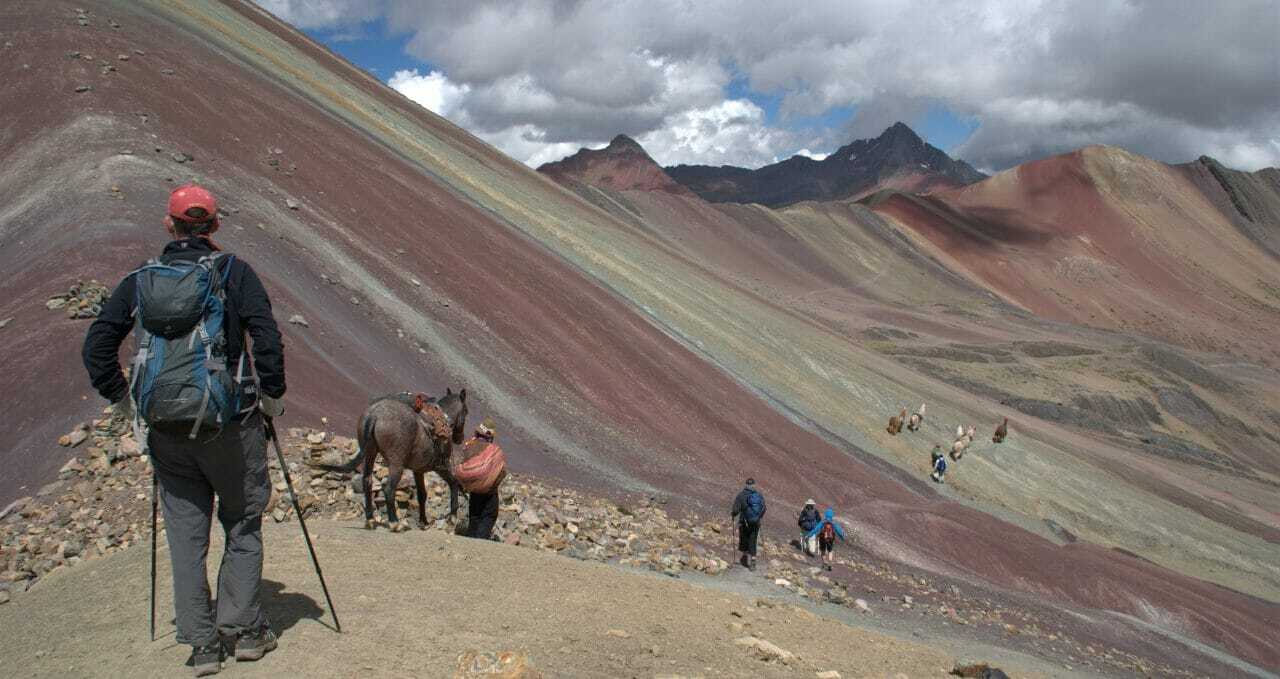
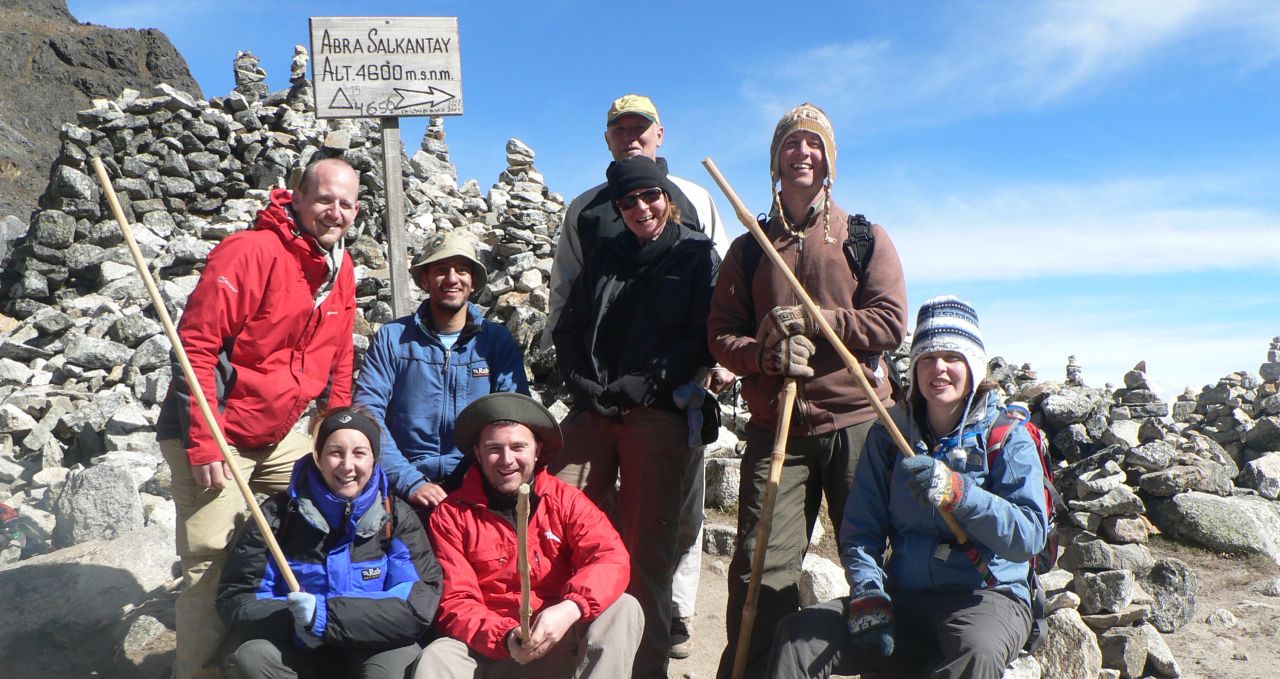
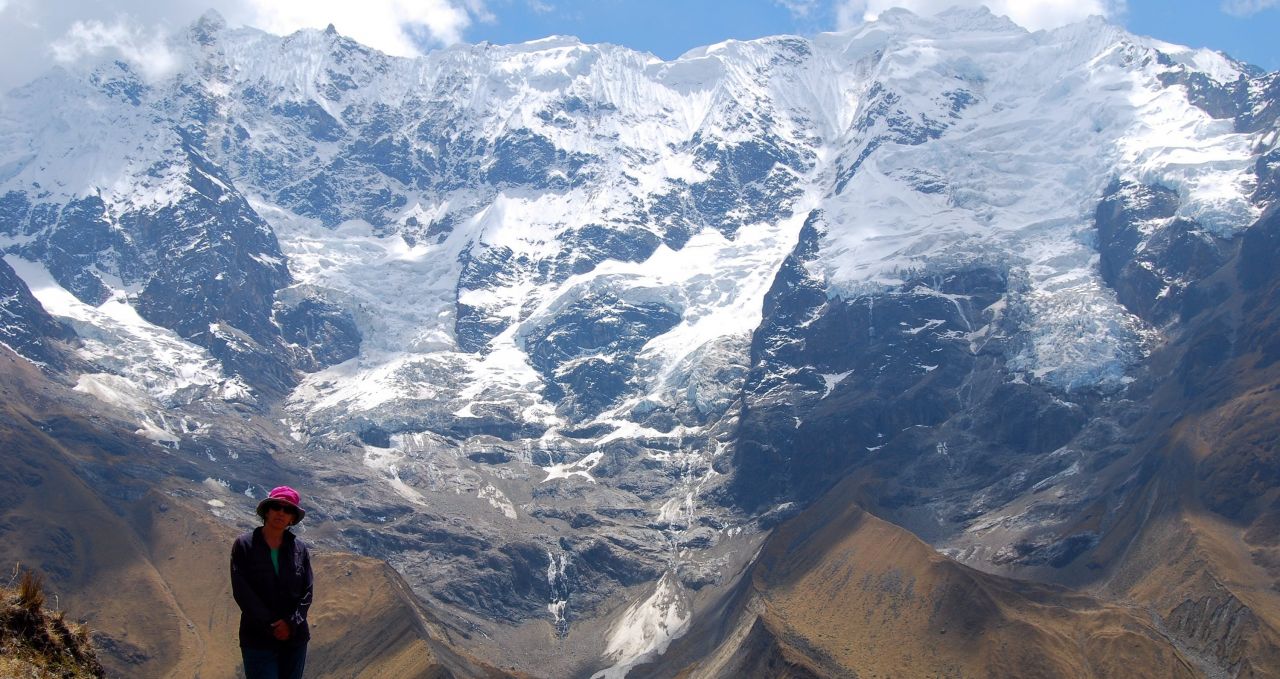
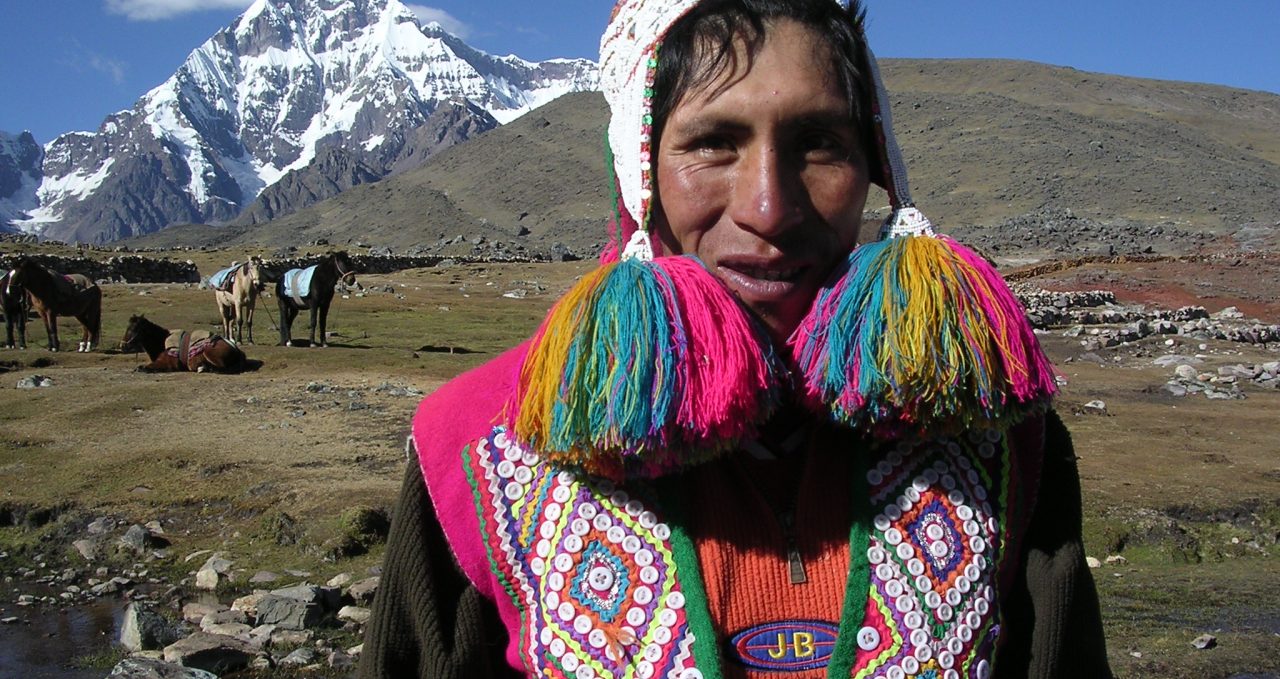
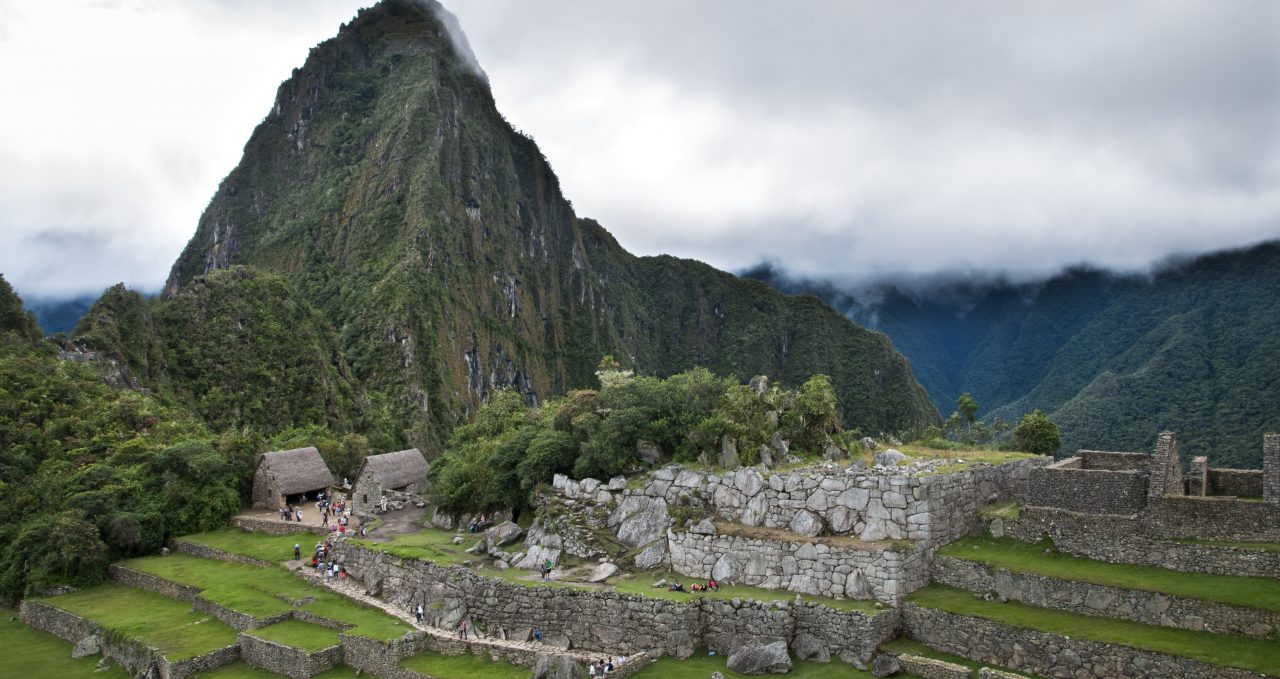
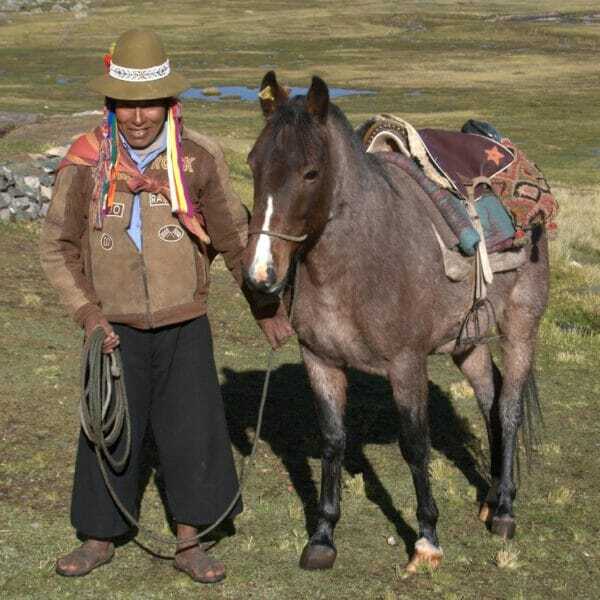
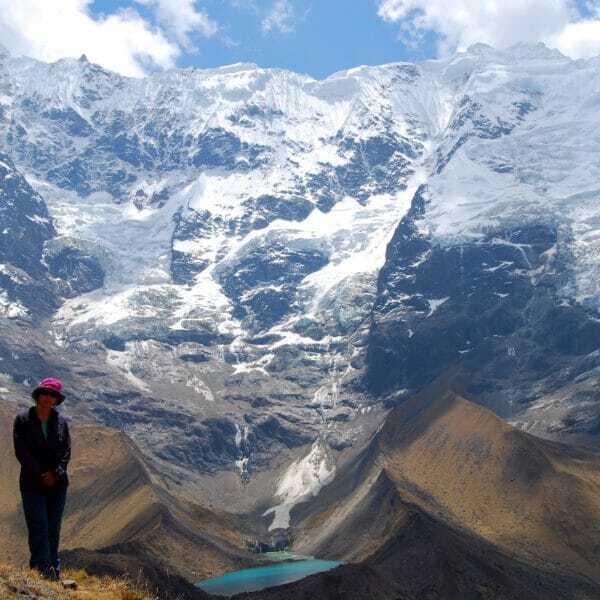
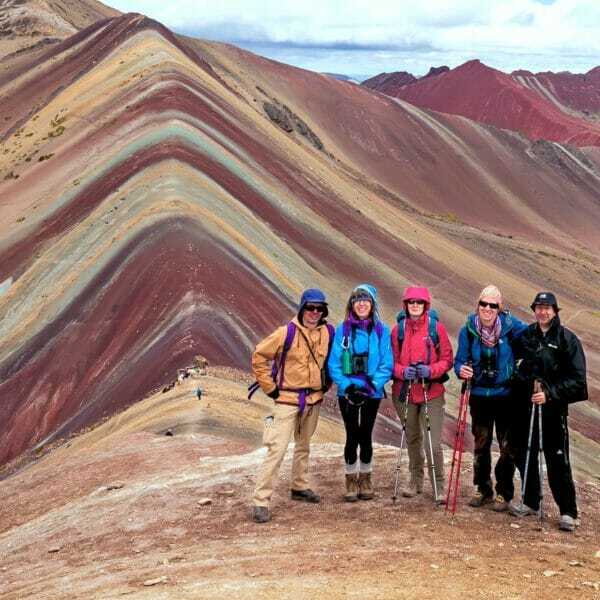
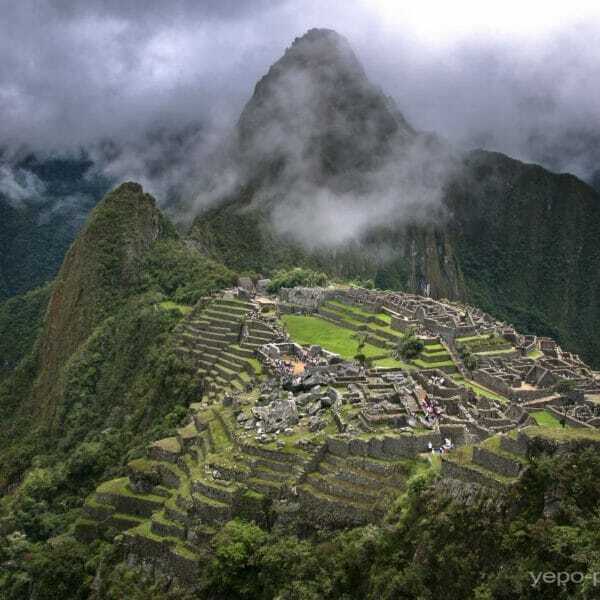
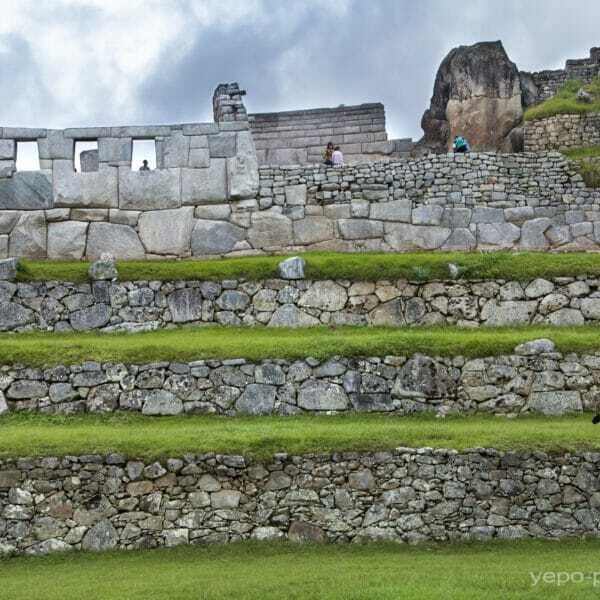
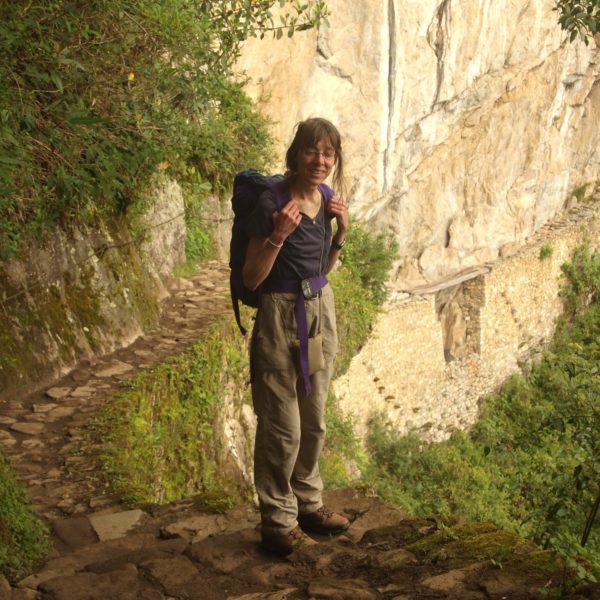
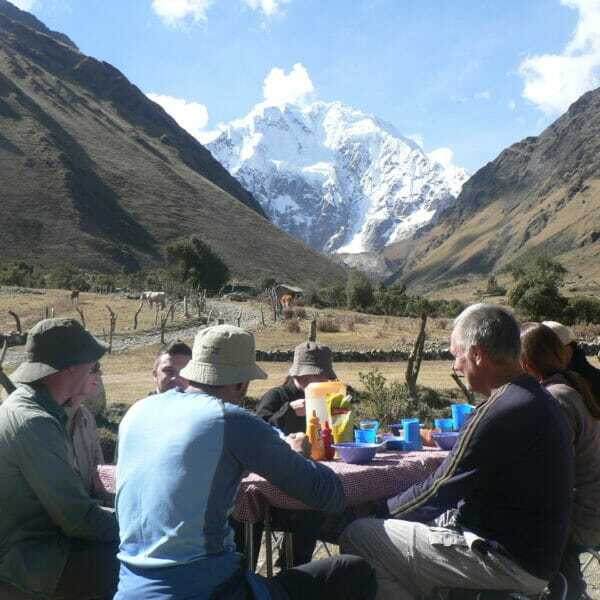
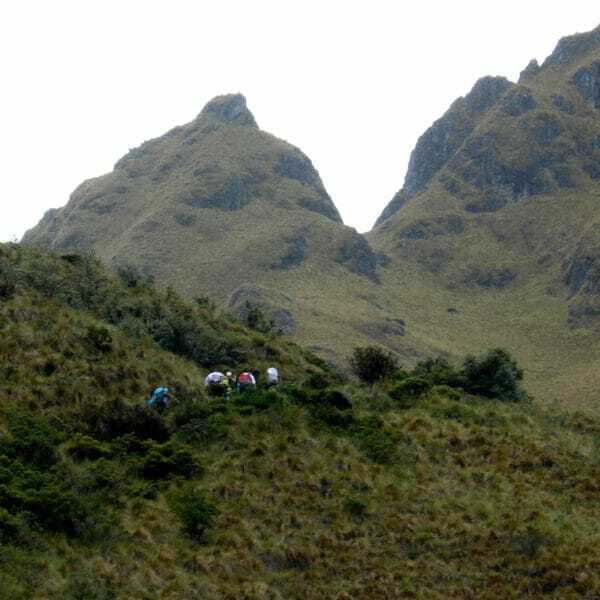
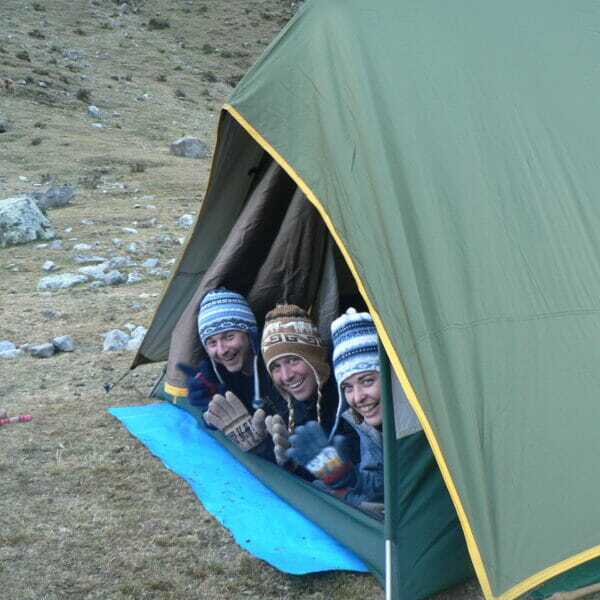
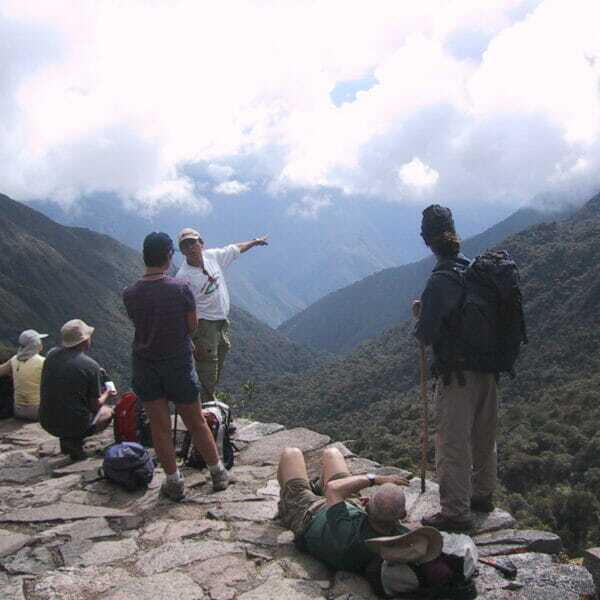
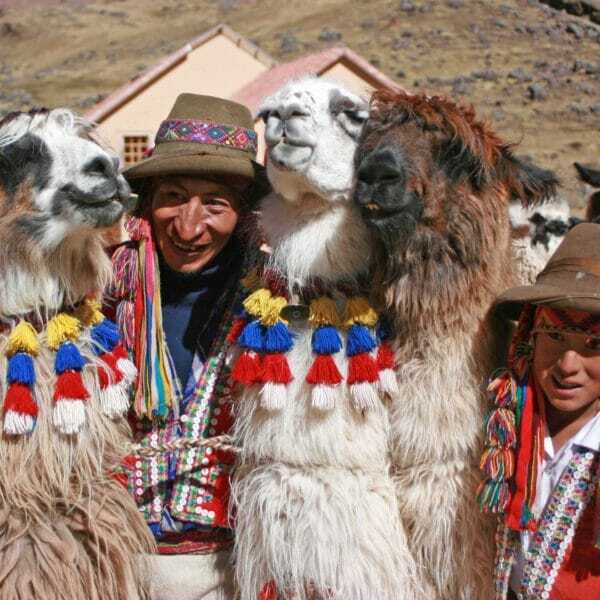
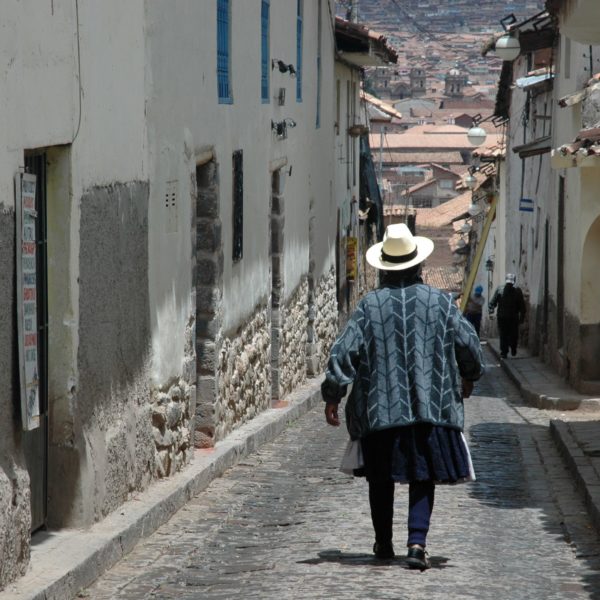
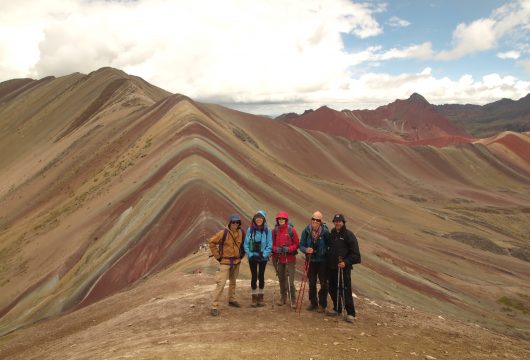
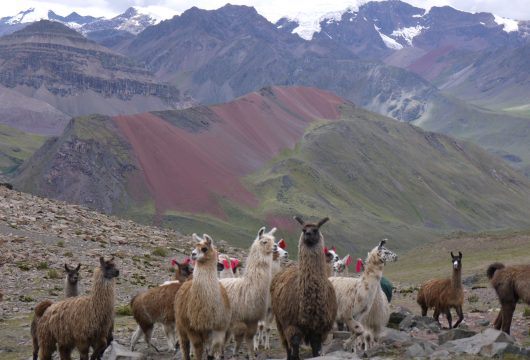
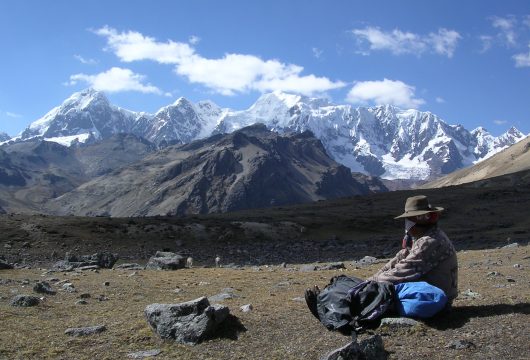
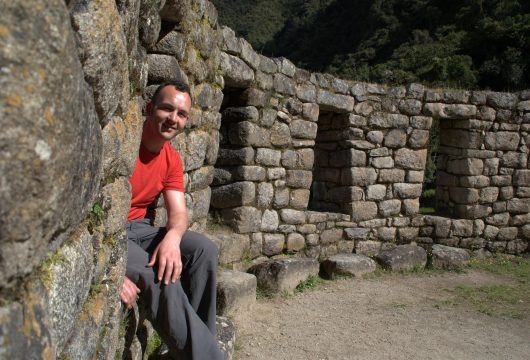
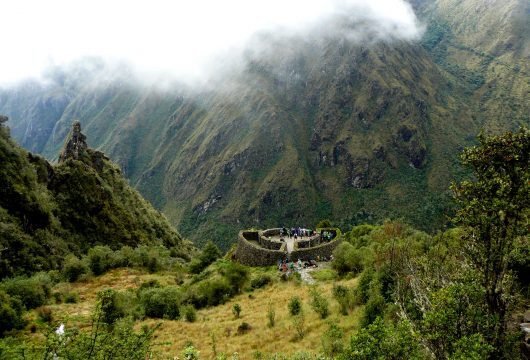
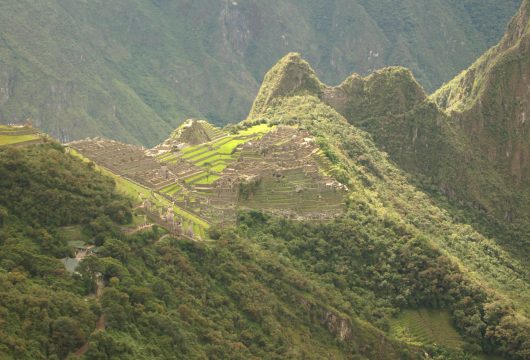
 a Group Tour
a Group Tour  a Tailor Made Tour
a Tailor Made Tour 